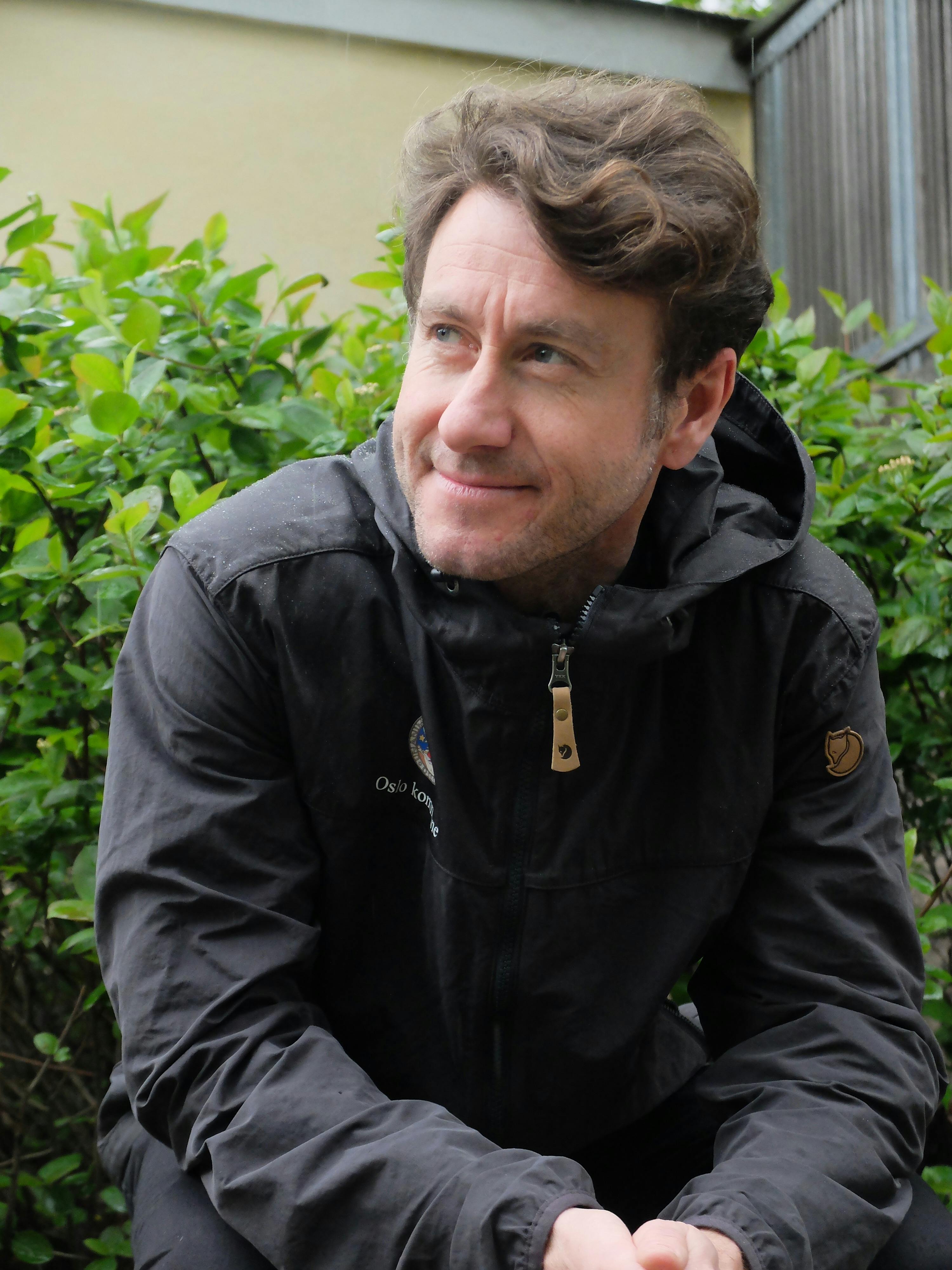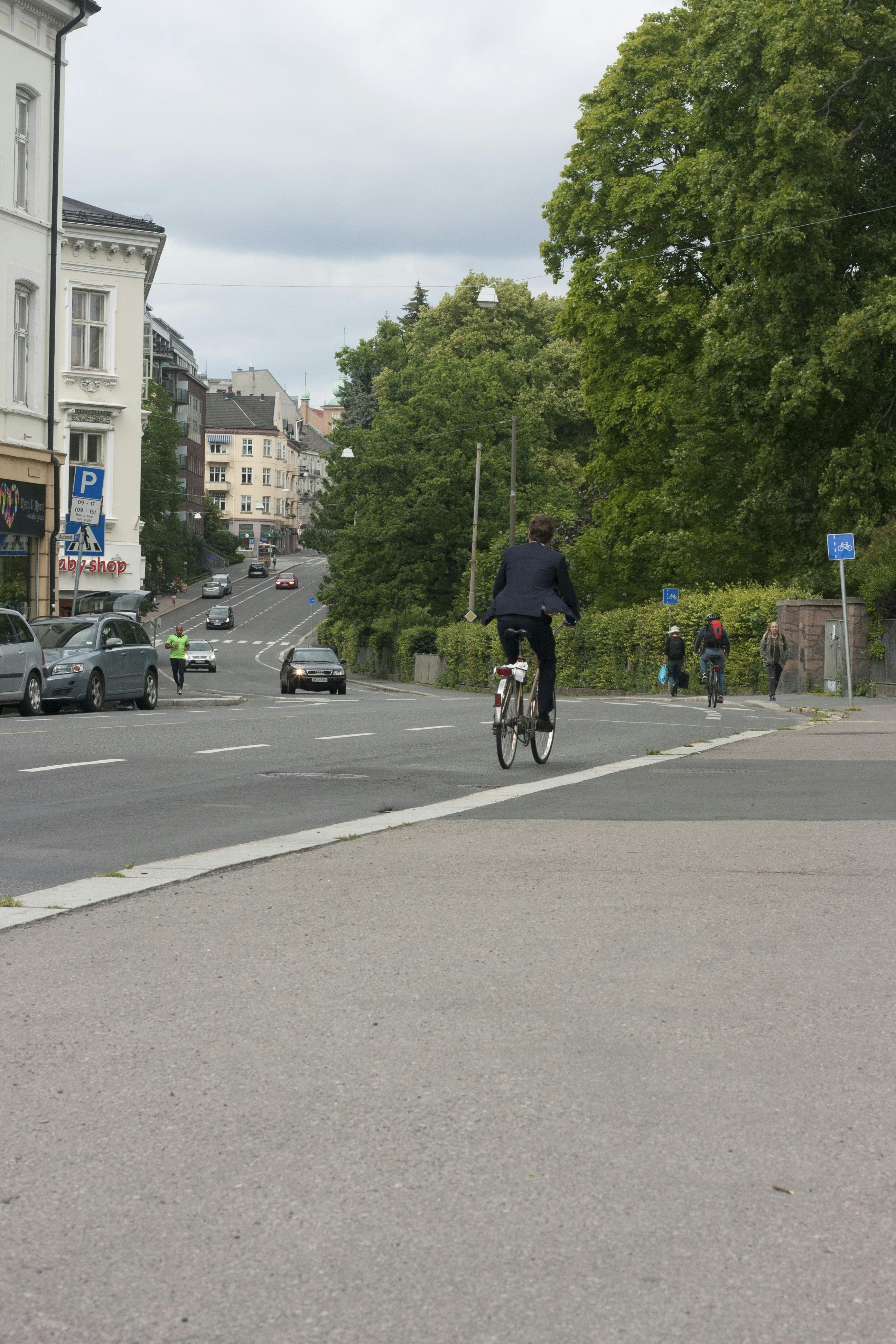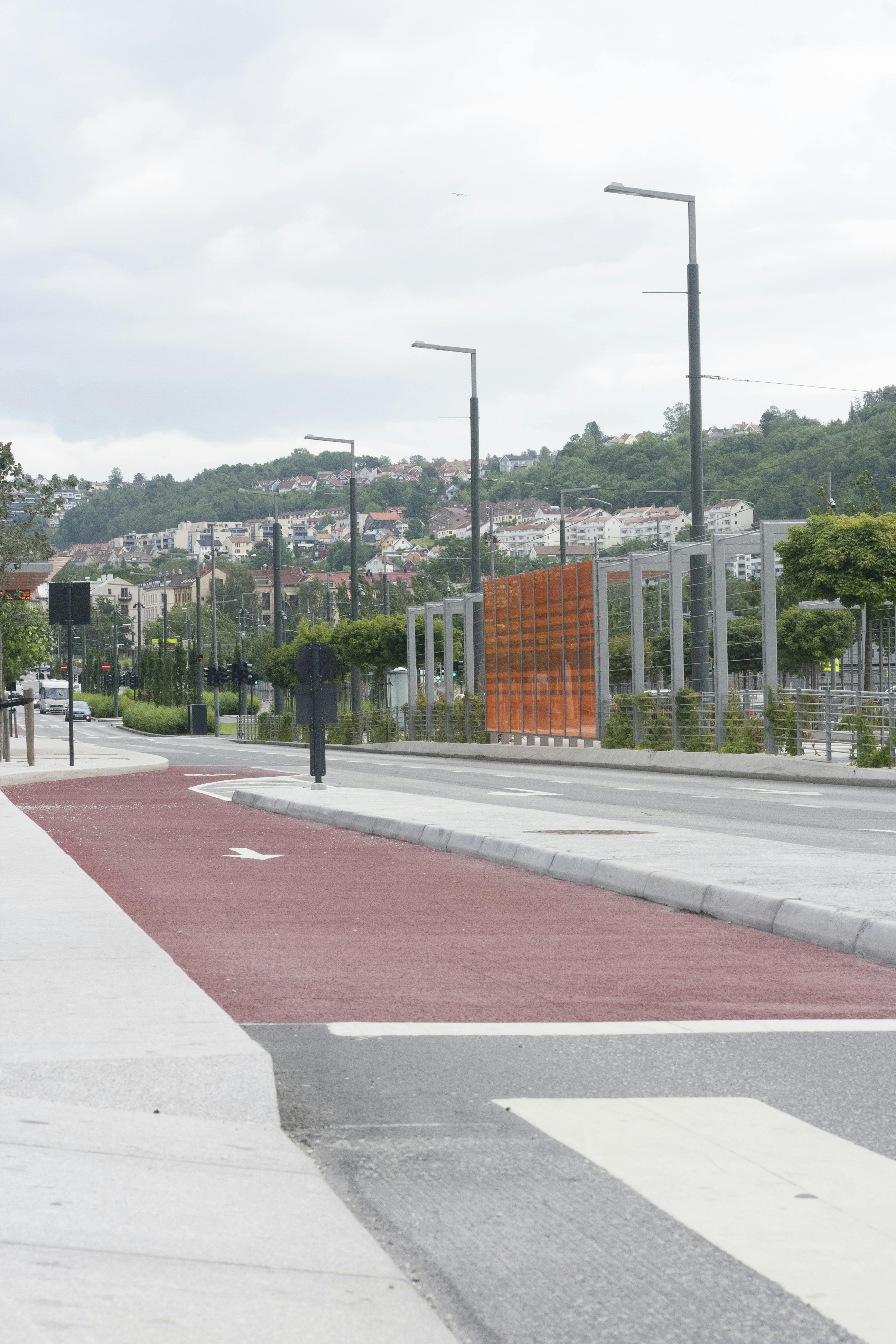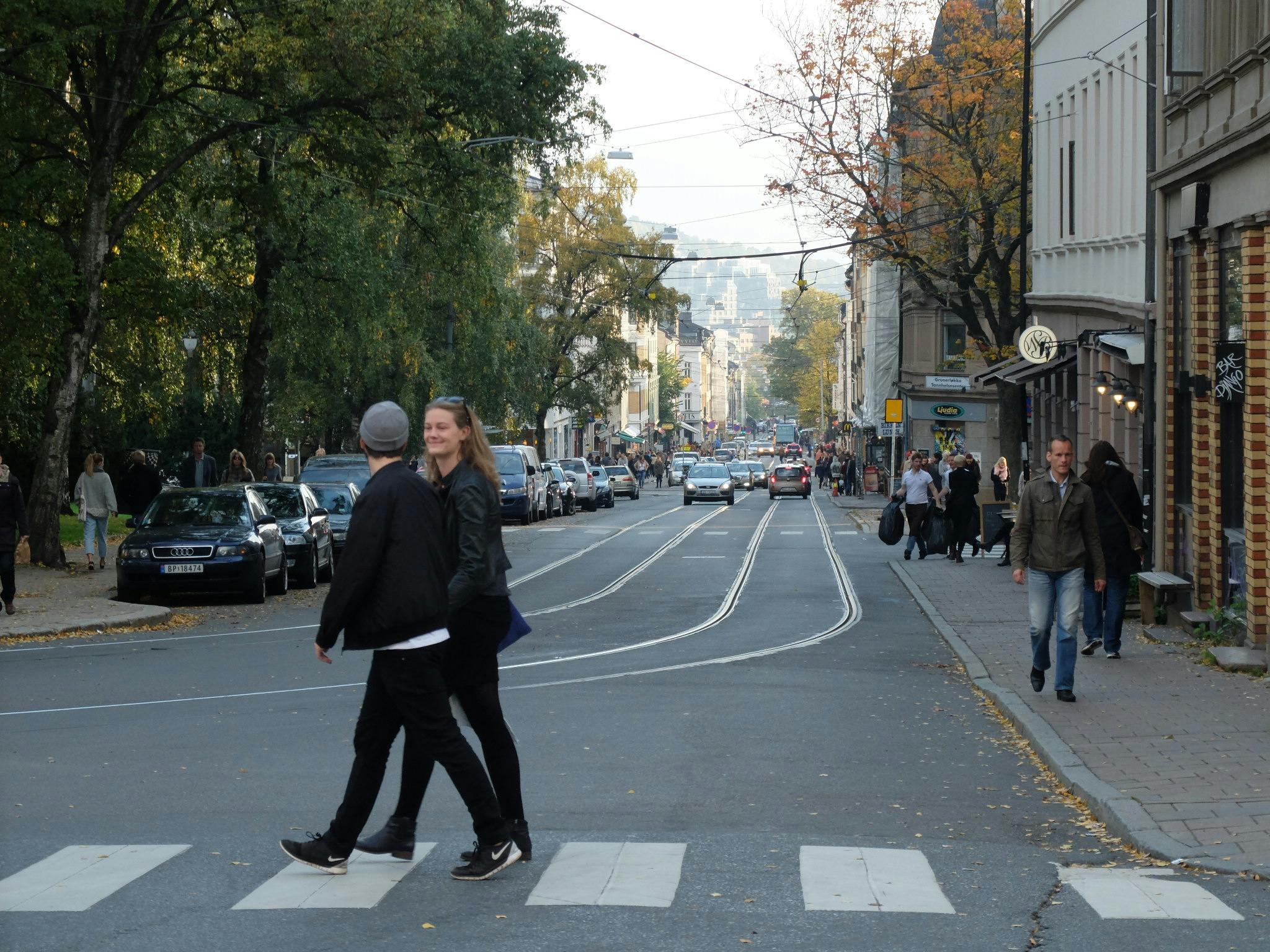Bicycle Director Rune Gjøs
Underestimated, unreleased, hopeless. The words describing Oslo from a biker’s perspective are many, and not all of them very positive. But change is in the air. We sat down with bicycle director of Oslo, Rune Gjøs, in order to get the whole picture.

Text: Silje Strømmen
Photos: Mari Oshaug
For this issue of Bikevibe we have talked with everyone from the biker enthusiast, the man on the street, the local government, the kid who just mastered the art of biking without support wheels, the girl who uses her bike to get everywhere and the guy who uses his bike to get from A to B the fastest. They all had one thing in common: none of them would define Oslo as a bicycle city.
A few words that describe Oslo as a bicycle city: Underestimated, with an unreleased potential, in the start-up phase and changing. Today, Oslo is not a bicycle city. What I mean by the word underestimated, is that there is a general impression, especially among those who never bike, that biking is dangerous. “How do you dare?” is a question I get on a regular basis. The fact is that there are parts of the city where you are perfectly able to bike safely. At the same time there are parts of town where you are not. The fact that many feel unsafe in traffic and use it as an excuse not to bike is something we should take seriously; respect it and do something about it.
This subject is something Rune Gjøs is passionate about. When talking, his whole face is involved, switching from emotion to emotion and frowning while thinking. Since 2013, he has held the title “bicycle director” in Oslo, a job that ensures that no day is alike.
- The biggest challenge with this job is that people have very high expectations. At the same time, the fact that people have these high expectations and are cheering on us is also one of the best things about the job. People want us to succeed.
So, what does he actually do? Well, he and the rest of the group forming the Agency for cycling have one aim: to get more people biking. An aim that even Rune’s children is proud to say their dad contributes to.
- I’m afraid to let people down, to not be able to deliver results fast enough. Oslo’s citizens are very impatient, with good reason.

I never stopped biking
The first time he rode a bike he was five. Back then there was no such thing as support wheels, and his dad would run behind the oversized Tomahawk bike holding him up, and then letting go hoping Rune wouldn’t notice. Needles to say, he didn’t always succeed. But Rune still remembers the feeling of getting it.
- I never stopped biking. Growing up, my mom and dad didn’t drive me to school or football practice or the movies, so I biked everywhere. When I moved to Trondheim to study I just continued doing so. My interest in biking goes back to it being my first conveyance that I never stopped using.
That he would end up working with environmental friendly transportation didn’t come as a surprise. Inspired by his childhood heroes Asterix and Obelix and their story “the city planner” he wanted to do something that mattered. He did not end up in city planning though, but found himself in transport planning instead.
- During my studies I did not see the bike as a major agent in the fight for sustainability. Looking back though I have always worked with environmental friendly transportation: first with bikes and public transportation in the Norwegian Public Roads Administration (NPRA) and then as the Secretary General of the Cyclists’ Association (SLF) and now as the director of the Agency for cycling in Oslo.

Changing
Circling back to the subject of Oslo as a bicycle city: In 2005 the first cycling strategy for Oslo was adopted. In 2015 it was replaced by a new strategy, signed the Agency for Cycling and adopted by the City Councillor. Despite the pale descriptions of Oslo, there is no denying that things are starting to happen.
- If you walk up Grünerløkka you will see the bike repair shops Oslovelo and Dapper and many people biking around. You’ll see young women cycling on their way to a party Friday night and other images that will get you thinking “am I in Copenhagen or in Oslo right now?” This change does not reflect the whole city, but characterises the areas around the city districts Grünerløkka, Sagene and St. Hanshaugen. It is an exciting change that will contribute as an engine and promoter for further changes in the rest of the city.
However, he is quickly to dismiss the honour for the changes being given to his own agency.
- This has little to do with our efforts to facilitate cycling in Oslo. There is a strong international bike trend which is part of an urban culture. It is no coincidence that cycling is getting popular in these specific boroughs. If there is one thing we know it’s that people living there are young and love to travel. They are out there experiencing other cities’ bicycle cultures and trends, and they see how fantastic a city becomes when many people cycle. They bring these impulses and ideas back to Oslo, and catalyse the growing bike culture here at home. Since we are so inspired by what’s going on in the major European bike cities, like Amsterdam and Copenhagen, we want the same thing for Oslo. There is a lot more people biking today than before, which is really good – and it is happening despite the lack of facilitation. Just imagine how many would grab their bikes and get on the road if the infrastructure was better! That is a really inspiring thought.
Male, 45, higher educated
Still, the typical biker in Oslo is male, aged 45, has a high education and uses his bike to get to and from work. If we look at this group alone, the percentage of bikers in the population is 16 %, compared to the average 8 %.
- This is a sign that we have not been successful in our work so far. It is a very masculine environment that may be experienced as quite hard and though.
Rune knows what he’s talking about. He used to be one of them: choosing the quickest route and cycling past red lights. Starting his job at SNL he made a decision: to start following the traffic rules.Ever since he has arrived worked calmer than ever before. Yes, it may take him 2 minutes longer to get to the office, but the experience is totally different.
- I like biking by the sea, and now I find myself choosing routes that are more comfortable and that make me relax.
Now he bikes through Oslo’s newest borough, Bjørvika, every day. The areais criticized for the lack of including bikes in the city planning. The result is a 45 m wide street, with 1.5 m bicycle lanes on each side.
- I experience that there are good intentions, but that in Norway bike planning as a field of expertise is lagging behind successful bicycle cities. We are not good enough to integrate the bike in city planning. Facilitating for bikes is not something you can just come and fix after the borough is finished. Then it’s too late.

Looks to the best
The Agency for Cycling looks to the best bicycle cities in Europe for inspiration: Berlin, Amsterdam, and Copenhagen, and only compares itself with the best.
- Where other cities have had an existing culture for biking for decades, Oslo started from scratch. However, it is inspiring to see that also the iconic bicycle cities have been way off, but still managed to get back on track.
No one seem to know where Oslo went wrong or why there have never been a culture for biking. What they do know though is that bikes used to be a majority, and then they were not.
- In the 50s and 60s there were no special arrangements for bikes, but they were in majority and so the cars had to give way to them. The streets were more open and more democratic used.
Rune strongly believes that Oslo need to get back to that democracy. At the same time he knows that they will not be able to build separate bicycle infrastructure within the city centre – and maybe not within ring 2.
- We can’t afford to do that, and we don’t have the time. What we can do, however, is to redistribute the traffic area from cars to bikes. Doing so will only require decisionmaking and strict prioritising. I think that is the way we need to go: allow the bikers to take back the streets, but do so together with the motorists.
Optimistic
To Rune and the rest of the Agency for Cycling only the best is good enough. Therefore it was only naturally that Oslo, much like Copenhagen, should have a bike accounting to measure the progress. The ambition is to produce one every second year, with the first published for 2013.
The bookkeeping will be resourceful both for the population and the politicians wanting to study the development.
- The thing that is so incredible, and at the same time such a challenge with Oslo, is the enormous growth in population. If Oslo is going to survive, welcoming all the migrants without losing its mobility and fresh air, people need to start biking. I think that as the city grows, bikes are going to be an increasingly important mode of transportation, Rune predicts – and one can already see the beginning, as an increasingly part of the population prefers cycling to work out of practical reasons: public transportation is already starting to reach its limit, leading to packed trams, busses and tubes during peak hours.
- I’m very optimistic about the future. I think Oslo will be a totally different bicycle city in 10 years.